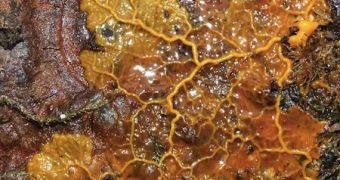A new study published in the Proceedings of the National Academy of Sciences explains that, contrary to what some would believe, not having a brain is not necessarily a deal breaker when it comes to successfully navigating one's surroundings.
Quite the contrary: all it takes is some slime, and spatial orientation becomes child's play.
Apparently, this is what researchers have learned after looking into how a mold known to science as Physarum Polycephalum succeeds in moving through its surrounding environment without making the mistake of taking the same path twice.
Thus, this particular type of mold constantly secretes slime, and uses it as an external spatial memory.
According to the scientists who looked into this issue, “As it moves, the slime mold leaves behind a thick mat of nonliving, translucent, extracellular slime.”
Furthermore, “The slime mold's behavioral response strongly suggests that it can sense extracellular slime upon contact, and uses its presence as an externalized spatial memory system to recognize and avoid areas it has already explored.”
Truth be told, Physarum polycephalum is known to feed on microbes, and to have a natural repulsion towards light and salt. Therefore, its knowing exactly how to find its next meal without stumbling upon things that could harm it can only come in handy. Mongabay informs us that laboratory-based experiments have shown that, when presented with two branches, of which one was covered with slime and the other was left untouched, 39 out of 40 molds “chose” to move in the direction of the slime-free one.
This study stands as proof that, as the researchers behind it explain, “Even an organism without a central nervous system can effectively navigate complex environments.”
Furthermore, the behavior of the slime mold provides considerable support for the theory that such external spatial memories were, “(...) the first step towards the evolution of memory in organisms with more sophisticated neurological capabilities than our slime mold.”

 14 DAY TRIAL //
14 DAY TRIAL //